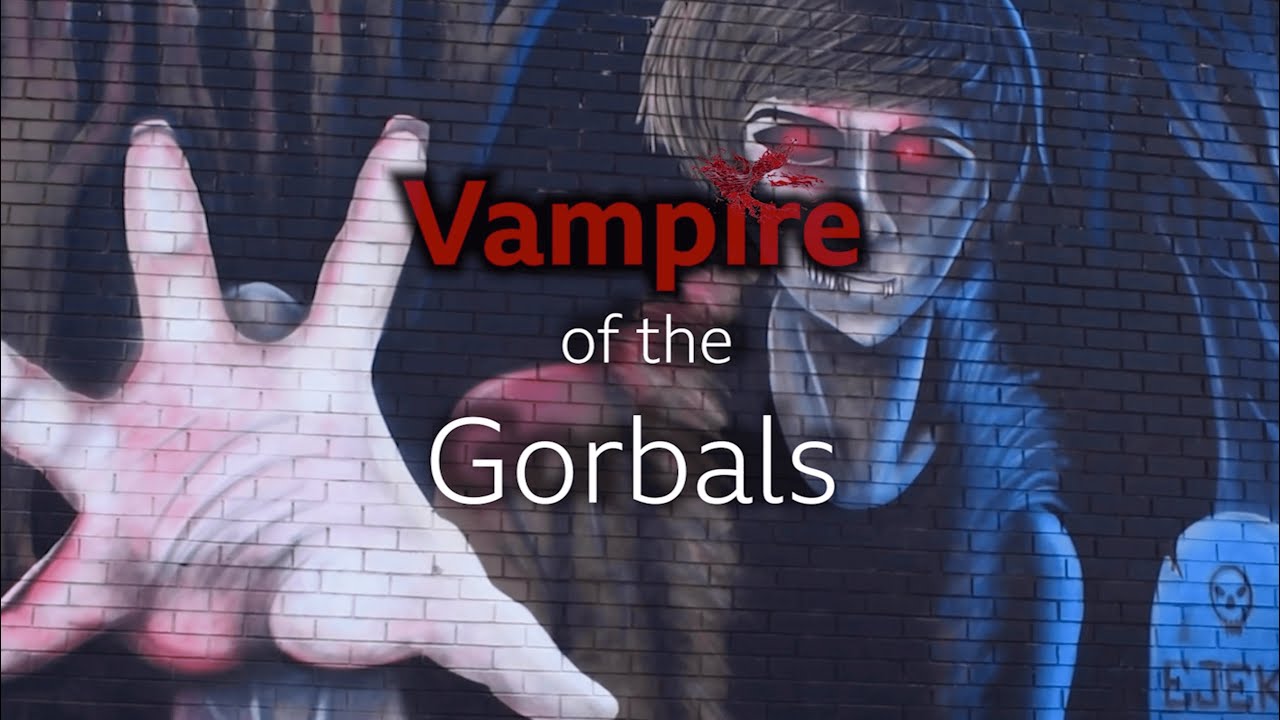
when Horror Yearbook – Gorbals Vampire became one of Scotland’s most bizarre urban legends during the 1950s. The tale described a towering creature over seven feet tall with gleaming iron teeth. It was said to stalk children in the Southern Necropolis graveyard at night. The story spread quickly among schoolchildren in Glasgow’s Gorbals area, triggering a wave of fear and fascination. It was not an era of internet or instant news, so word of mouth and playground gossip fueled belief in the creature. Local children genuinely believed their lives were in danger. Without any adult prompting, they planned a mass search for the vampire. Armed with sticks and homemade weapons, hundreds of kids stormed the graveyard. This was not just mischief but a collective expression of panic. Gorbals Vampire represented more than a monster; it embodied Cold War anxiety, poverty, and childhood vulnerability in post-war Britain.
As evening fell over the Southern Necropolis, shadows stretched across ancient headstones. That night in 1954, hundreds of children gathered, some as young as seven. They clutched knives, stakes, and stones, prepared to defend themselves. Fear became a shared language. The kids waited for hours, peering between tombs and scanning every movement. Some believed they saw the vampire. Others only saw wind in the grass. No adult could have convinced them otherwise. Policemen arrived to disperse the crowd but were met with defiance. Parents and teachers were stunned to discover the scale of the event. No official sightings of the vampire were ever confirmed. Still, the belief persisted. This was a night when imagination ruled over logic. Gorbals Vampire did not need to exist to become real. In the minds of those children, it had already taken form. That memory shaped a generation’s understanding of fear and courage.
“Read about: Fresno Nightcrawler: The Mystery That Walked Into the Spotlight”
Shortly after the vampire hysteria, blame turned toward popular culture. At the time, horror comics from the United States had reached British shops. These comics featured skeletons, monsters, and undead villains. Adults feared they were corrupting children’s minds. Some believed the comics planted the idea of the Gorbals Vampire. Politicians and religious leaders quickly joined the chorus of concern. Teachers began confiscating comics. Newspaper editorials condemned the influence of American horror. In response, the British Parliament introduced laws to restrict violent publications aimed at young readers. While the vampire itself remained a mystery, the debate over media influence took center stage. Some scholars argued the panic revealed deeper societal tensions. Others noted how quickly adults projected blame instead of exploring why children clung to such stories. Gorbals Vampire exposed the uneasy relationship between childhood imagination and adult control in a rapidly changing world.
“Read more: Burning for Wellness: Experts Alarmed by Gen Z’s Tanning Obsession”
The Southern Necropolis was more than a graveyard; it became a stage for youthful myth-making. Nestled within industrial Glasgow, the site felt eerie and forgotten. Rusted gates, tilted stones, and thick fog gave it an atmosphere ripe for ghost stories. Children knew the space well. It was a shortcut home or a quiet place to play. But under the weight of rumor, it transformed. Every cracked headstone became a clue. Every rustle suggested danger. The Gorbals Vampire turned the necropolis into a living legend. Locals still recall the events with a mix of pride and disbelief. Over time, the graveyard became linked forever with the story. Tourists now visit it with curiosity, hoping to catch a glimpse of Glasgow’s strangest legend. Though no vampire was found, the energy and imagination of that night left a permanent mark. The location carries whispers of both childhood wonder and community folklore.
The Gorbals Vampire endures not because it was real, but because it mattered. It captured a unique moment in time when fear and storytelling merged. People now look back and see it as a case study in moral panic. Teachers reference it in media literacy lessons. Historians connect it to wider cultural trends of post-war Britain. Artists have used the story as inspiration for comics, films, and plays. For many Glaswegians, it remains a quirky badge of local identity. It shows how myths can form rapidly and hold surprising power. It also reminds society to listen when children express fear, instead of dismissing their voices. The vampire may never have walked the graveyard, but it still walks in memory. Gorbals Vampire serves as a reminder that folklore lives in the tension between belief and disbelief, between fantasy and fact, and between fear and fascination.